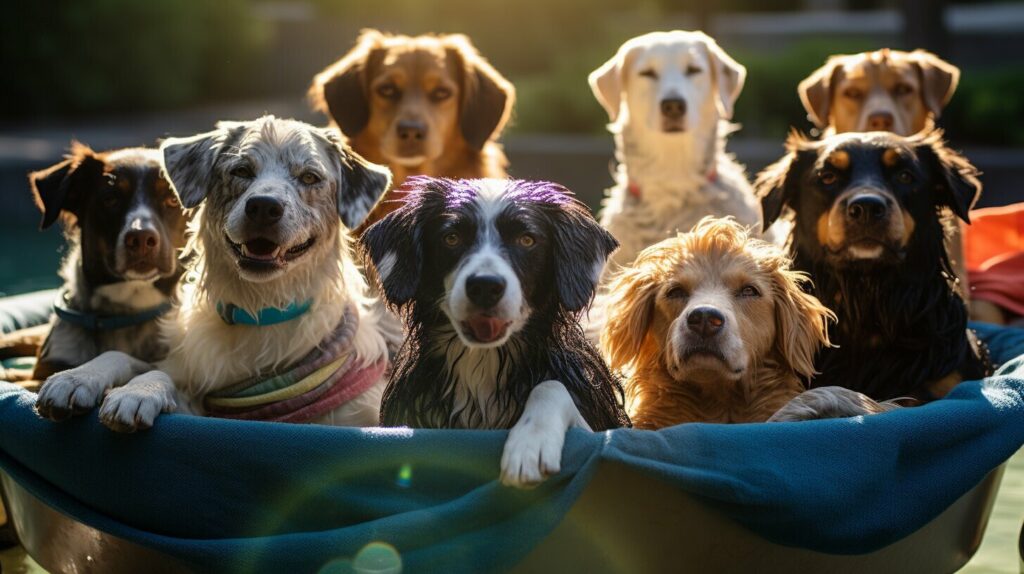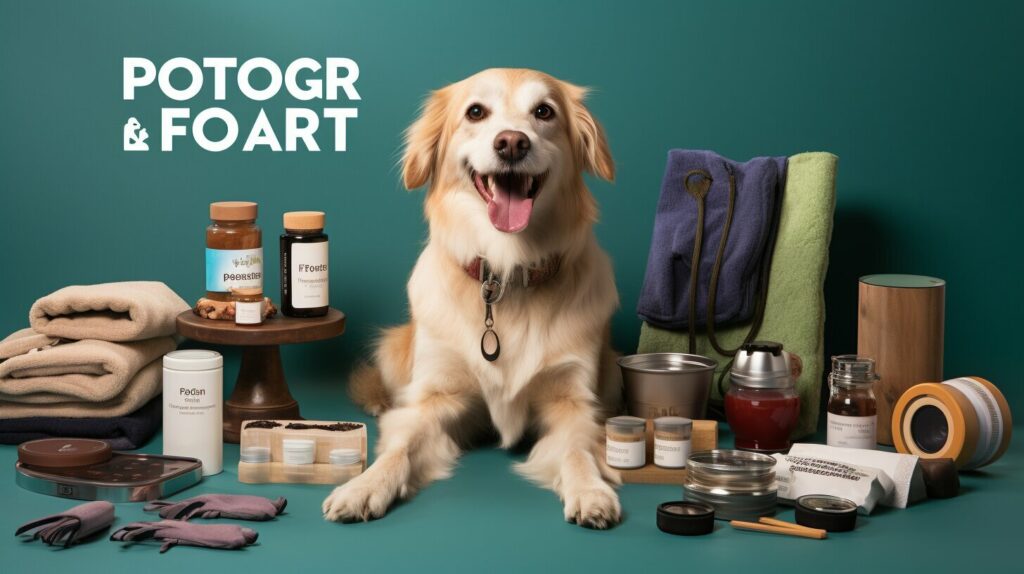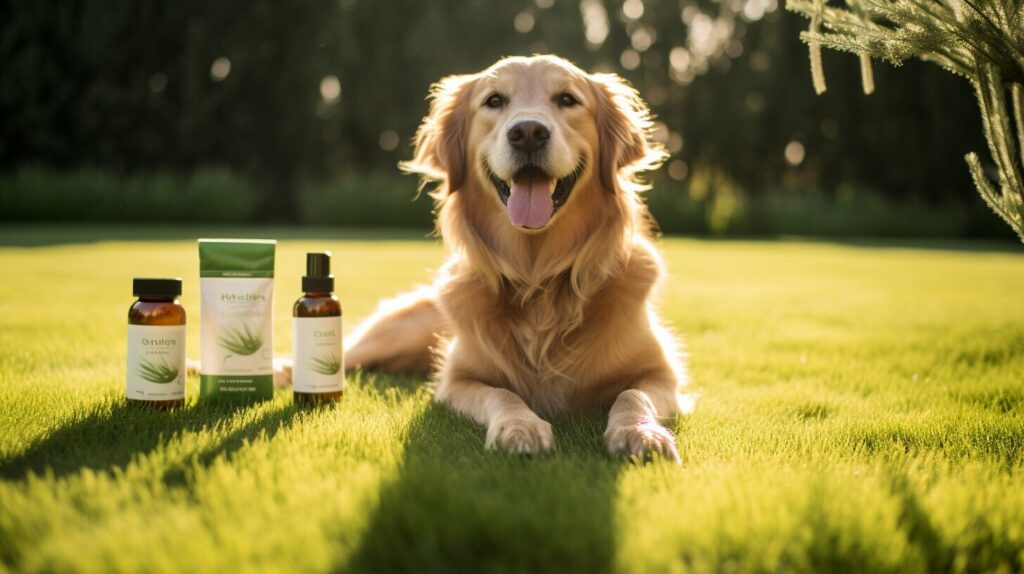As temperatures rise during summer months, it’s important to take extra precautions to protect your furry friends from the heat. Dogs are susceptible to heatstroke and other heat-related illnesses, so it’s crucial to be aware of the risks and take steps to keep them cool and comfortable.
In this article, we’ll provide essential tips for keeping your dogs safe during a heatwave, including creating a cool environment, staying hydrated, adjusting exercise routines, and recognizing the signs of heatstroke. By following these guidelines, you can help ensure your four-legged companions stay healthy and happy when the temperatures soar.
Key Takeaways:
- Dogs are at risk of heatstroke and other heat-related illnesses during a heatwave.
- Creating a cool environment, staying hydrated, and adjusting exercise routines are crucial for keeping dogs safe in hot weather.
- Recognizing the signs of heatstroke and providing first aid is essential for protecting your furry friends.
Understanding the Risks of Heatwaves for Dogs
As a responsible dog owner, it’s important to understand the risks that heatwaves pose to your furry friend. Dogs are unable to regulate their body temperature as effectively as humans, which makes them more susceptible to heat exhaustion and heatstroke.
During a heatwave, it’s essential to take precautions to protect your dog from the dangers of extreme heat. Heatstroke can be fatal if not recognized and treated promptly, so it’s crucial to know the signs and symptoms.
Recognizing the Signs of Heatstroke in Dogs
Signs of heatstroke in dogs include excessive panting and drooling, lethargy, weakness, vomiting, diarrhea, and collapse. If you notice these symptoms, move your dog to a cool and shaded area immediately.
It’s important to note that brachycephalic breeds, or dogs with short snouts such as Pugs and Bulldogs, are particularly vulnerable to heat-related issues due to their narrow airways. Extra care must be taken to keep these breeds cool and comfortable.
Protecting Your Dog from Heatstroke
To prevent heatstroke, it’s essential to keep your dog cool and hydrated during a heatwave. Avoid exercising your dog during the hottest times of the day and never leave them in a car, even with the windows cracked. Provide plenty of shade and cool water throughout the day, and consider using a cooling mat or bandana to help regulate their body temperature.
If you suspect your dog has heatstroke, take them to a veterinarian immediately. In the meantime, cooling your dog down with cool water and applying ice packs to their groin area and armpits can help lower their body temperature.
By recognizing the risks of heatwaves and taking the necessary precautions to protect your furry friend, you can ensure that they stay safe and healthy during the hot summer months.
Creating a Cool Environment for Your Dog
When temperatures rise during a heatwave, it’s crucial to create a cool environment for your furry friend to avoid heat-related issues. Here are some tips to help keep your dog cool:
- Provide plenty of shade: Create an area that’s shaded from the sun, like under a tree or a covered patio. Use a dog house or a tent to provide additional shade if necessary.
- Use fans or air conditioning: Fans are an easy way to circulate air and keep your dog cool. Keep the air conditioning on or open windows to allow fresh air to circulate inside the house.
- Place cool surfaces for your dog to lie on: Use cooling mats, damp towels or even a shallow pool of water to keep your dog’s body temperature down.
- Avoid taking your dog out during the hottest parts of the day: Take your dog out for walks early in the morning or after sunset when temperatures are cooler.
During a heatwave, it’s best to keep your dog indoors as much as possible. If you have to take your dog outside, make sure they have access to shade and plenty of water. Remember, dogs can get heatstroke just like humans, and it can quickly become a life-threatening emergency. By creating a cool and comfortable environment for your furry friend, you can help prevent heat-related issues and keep them safe during the hot summer months.
Hydration is Key
During a heatwave, it is essential to ensure that your dog has access to plenty of fresh and cool water. Dehydration can occur quickly in dogs, especially when they are out in the heat. It is important to monitor their water intake and refill their bowl regularly.
Consider adding ice cubes to their water bowl or investing in a dog water fountain to keep the water cool. If you plan on taking your dog for a walk or spending time outdoors, be sure to bring along a portable water bottle for them to drink from.
Refrain from giving your dog sports drinks or electrolyte-enhanced water as they contain artificial sweeteners that can be harmful to dogs. Instead, stick to plain water to keep them hydrated.
Signs of dehydration in dogs include loss of skin elasticity, dry gums, thick saliva, and lethargy. If you suspect that your dog is dehydrated, provide them with fresh water immediately and contact your veterinarian.
Adjusting Exercise Routines
Dogs need exercise, but during a heatwave, it’s crucial to modify their routines to keep them safe. High temperatures can cause heatstroke, dehydration, and even death in extreme cases. Here are some hot weather tips for dogs:
- Exercise in the cooler parts of the day – early morning or late evening – when the temperature is lower.
- Avoid intense activities, like running or playing fetch, and opt for more relaxed activities, like walking or swimming.
- Keep your dog mentally and physically stimulated indoors with games and puzzles that don’t require too much physical effort.
By adjusting your dog’s exercise routine, you can help them stay healthy and safe during a heatwave.
Cooling Techniques for Dogs
Dogs are unable to cool themselves down as effectively as humans, making them highly susceptible to heatstroke during a heatwave. When it comes to keeping your furry friend cool during the hot weather, there are several techniques you can use to help lower their body temperature.
Use Damp Towels
One of the simplest ways to cool down your dog is to use a damp towel. Wet the towel with cool water and place it over your dog’s body, paying special attention to their head, neck, and stomach. As the water evaporates, it will help to lower your dog’s body temperature.
Invest in a Cooling Vest
Another option for keeping your dog cool during a heatwave is to invest in a cooling vest. These vests are designed to be soaked in water and then placed on your dog’s body, providing constant cooling as the water evaporates.
Use Misting Fans
Misting fans can be a great way to keep your dog cool during a heatwave. These fans spray a fine mist of water into the air, which cools the surrounding area. Place the misting fan in an area where your dog likes to spend time, such as their favorite spot in the yard or inside your home.
Offer Frozen Treats
If your dog enjoys frozen treats, they can be a great way to cool them down during a heatwave. Freeze small amounts of water, chicken broth or beef broth in an ice cube tray and giving them to your dog as a cold, refreshing snack. Alternatively, you can purchase frozen dog treats from a pet store.
Monitor Your Dog Closely
Regardless of which cooling techniques you choose to use, it’s important to monitor your dog closely for any signs of overheating. If your dog appears to be panting heavily, drooling excessively, or seems lethargic, they may be in danger of heatstroke. If this is the case, move your dog to a cool area and contact your veterinarian immediately.
Protecting Paws from Hot Surfaces
During a heatwave, hot surfaces like pavement, sand, or concrete can cause severe damage to your dog’s paws. Protecting their sensitive paws is crucial for their comfort and safety.
One way to protect their paws is by using booties specially designed for dogs. These booties provide a barrier between their paws and the hot surface. Alternatively, you can apply paw balm to their paws before heading out for a walk. The balm provides a protective layer and helps moisturize their paws.
It is best to avoid walking your dog on hot surfaces during the hottest parts of the day. Early mornings or evenings are ideal times for walks during a heatwave. If you must walk your dog during the day, try to find grassy areas or shaded paths to protect their paws.
By taking these summer safety tips for dogs into consideration, you can help prevent paw burns and discomfort for your furry friend during a heatwave.
Traveling with Your Dog in Hot Weather
When the temperatures rise during summertime, you may need to travel with your dog on a hot day. Whether it’s a long road trip or a short drive, it’s essential to keep your furry friend comfortable and safe during the journey.
To ensure a pleasant traveling experience for you and your dog, follow these tips:
- Never leave your dog alone in a hot car, even if it’s just for a few minutes. The temperature inside a car can rise to dangerous levels within minutes, even if the windows are cracked open.
- If you’re traveling by car, make sure your dog has access to fresh water at all times. Bring along a collapsible water bowl and a supply of cool water.
- Plan your trip during the cooler parts of the day, such as in the early morning or late evening, to avoid the hottest times of the day.
- Make sure your car’s air conditioning is working properly and keep the temperature cool and comfortable for your dog.
- Consider using a crate or a safety restraint to keep your dog secure during the journey. It will also prevent them from climbing on the seats or sticking their head out of the window, which can be dangerous during the ride.
- Take frequent breaks during the trip to allow your dog to stretch their legs, relieve themselves, and take a drink of water. It’s also an opportunity for you to assess their well-being and adjust their environment accordingly.
By following these tips, you can ensure that your dog stays safe and comfortable during your summer travels together.
Recognizing and Treating Heatstroke in Dogs
Heatstroke is a serious condition that can be fatal if left untreated. It occurs when a dog’s body temperature rises above normal levels and their natural cooling mechanisms, such as panting, are insufficient to regulate their temperature.
The signs of heatstroke in dogs include excessive panting, drooling, lethargy, vomiting, diarrhea, and in severe cases, seizures and collapse. It’s important to recognize these signs early and take immediate action to protect your dog’s health.
If you suspect your dog is suffering from heatstroke, move them to a cooler area immediately. Apply cool water to their fur, but avoid using ice-cold water as this can cause their body temperature to drop too quickly and cause shock. Try to encourage your dog to drink water, but do not force them.
Contact your veterinarian as soon as possible for further guidance. Heatstroke can cause organ damage and other complications that require prompt medical attention. While waiting for professional help, monitor your dog’s breathing, heart rate, and overall condition carefully.
It’s essential to take preventive measures to protect your dog from heatstroke during a heatwave. Never leave your dog in a parked car, even with the windows open, as temperatures can rise to dangerous levels within minutes. Avoid intense exercise during the hottest parts of the day, and always provide plenty of shade and fresh water for your dog to stay cool and hydrated.
By recognizing the signs of heatstroke and taking prompt action, you can protect your furry friend from the dangers of extreme heat. Stay vigilant, stay cool, and keep your dog safe and healthy this summer.
Heatwave Precautions for Brachycephalic Breeds
If you own a brachycephalic breed, such as a pug or bulldog, you need to take extra precautions during a heatwave to protect your furry friend from heatstroke and other heat-related illnesses. Brachycephalic breeds have shorter airways, which can make it more difficult for them to breathe in hot weather.
First and foremost, make sure your brachycephalic dog stays hydrated. Keep plenty of fresh water available and consider adding ice cubes to cool it down. You may also want to offer your dog frozen treats, such as homemade ice pops made from low-sodium broth, to help them cool down.
Secondly, avoid taking your brachycephalic dog outside during the hottest parts of the day. Instead, take them for walks in the early morning or late evening when temperatures are cooler. If you do need to take your dog outside during the day, make sure it’s only for a short period and that you keep them in the shade.
Thirdly, create a cool environment for your dog indoors. Use air conditioning or fans to lower the temperature, and provide plenty of shaded resting areas. You can also use cooling mats or damp towels to help your brachycephalic dog regulate their temperature.
Finally, never leave your brachycephalic dog in a hot car or in a hot room without proper ventilation. This can quickly lead to heatstroke, which can be life-threatening. If you suspect your brachycephalic dog is suffering from heatstroke, move them to a cool area immediately and contact your veterinarian.
Conclusion
During a heatwave, it is crucial to take precautions to protect your dog from heat-related issues. Providing a cool environment, ensuring proper hydration, adjusting exercise routines, and using cooling techniques are all essential steps to keep your furry friend safe and comfortable. Remember to also protect their paws from hot surfaces and never leave them alone in a hot car.
Recognizing the signs of heatstroke in dogs and seeking immediate treatment can be life-saving. Brachycephalic breeds require special attention during extreme heat due to their shortened airways. By following these tips, you can help protect your dog from the dangers of a heatwave.
Always keep an eye on your dog’s behavior and monitor them closely for signs of overheating. By being proactive and taking necessary precautions, you can keep your dog safe and healthy during hot weather. Stay cool, stay safe, and enjoy the summer with your furry friend!
FAQ
Q: What are the risks of heatwaves for dogs?
A: Heatwaves can pose serious risks to dogs, including the potential for heatstroke. Dogs are more susceptible to overheating due to their limited ability to cool down through sweating. It’s important to recognize the signs of heatstroke and take steps to prevent it.
Q: How can I create a cool environment for my dog during a heatwave?
A: To create a cool environment for your dog, provide ample shade, use fans or air conditioning, and offer cool surfaces for them to lie on. It’s also important to keep them indoors during the hottest parts of the day to avoid excessive heat.
Q: How can I ensure my dog stays hydrated during a heatwave?
A: Proper hydration is key during a heatwave. Make sure your dog has access to fresh and cool water at all times. Monitor their water intake and refill their bowl frequently. Signs of dehydration in dogs include dry gums, lethargy, and loss of appetite.
Q: Should I adjust my dog’s exercise routine during a heatwave?
A: Yes, it’s important to modify your dog’s exercise routine during a heatwave. Avoid exercising them during the hottest parts of the day and opt for cooler times, such as early morning or late evening. Alternatively, you can engage them in mentally stimulating activities indoors.
Q: What cooling techniques can I use for my dog during a heatwave?
A: There are several cooling techniques you can try for your dog, including using damp towels, cooling vests, misting fans, or offering them frozen treats. These methods can help lower their body temperature and provide relief from the heat.
Q: How can I protect my dog’s paws from hot surfaces during a heatwave?
A: To protect your dog’s paws from hot surfaces, consider using booties or paw balms. Avoid walking them on hot pavement or sand, as it can cause burns and discomfort to their sensitive paws.
Q: How can I travel with my dog in hot weather?
A: When traveling with your dog during a heatwave, never leave them alone in a hot car. Ensure the car is cool and comfortable for them by using air conditioning or opening windows. Consider alternative transportation methods if necessary.
Q: How can I recognize and treat heatstroke in dogs?
A: It’s important to be able to recognize the signs of heatstroke in dogs, which include excessive panting, drooling, vomiting, and weakness. If you suspect your dog has heatstroke, move them to a cooler area and contact a veterinarian for immediate help. In the meantime, you can provide first aid by cooling them down with wet towels or water.
Q: What precautions should I take for brachycephalic breeds during a heatwave?
A: Brachycephalic breeds, such as Bulldogs or Pugs, are more susceptible to heat-related issues due to their shortened airways. Take extra precautions to keep them cool and comfortable during a heatwave. Provide shade, access to water, and avoid excessive exercise in hot weather.



